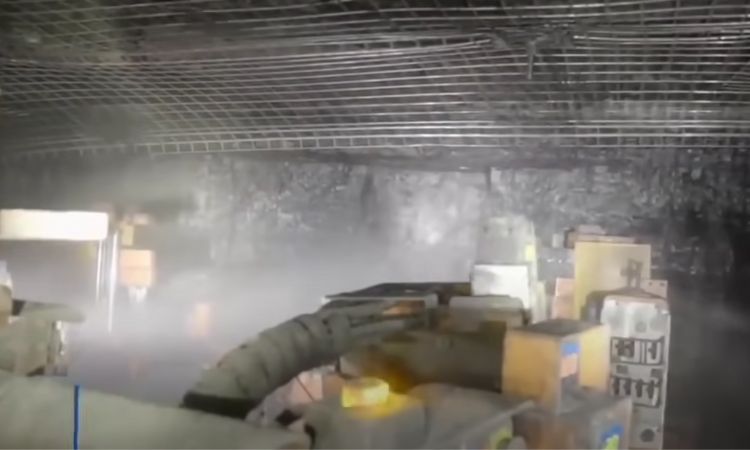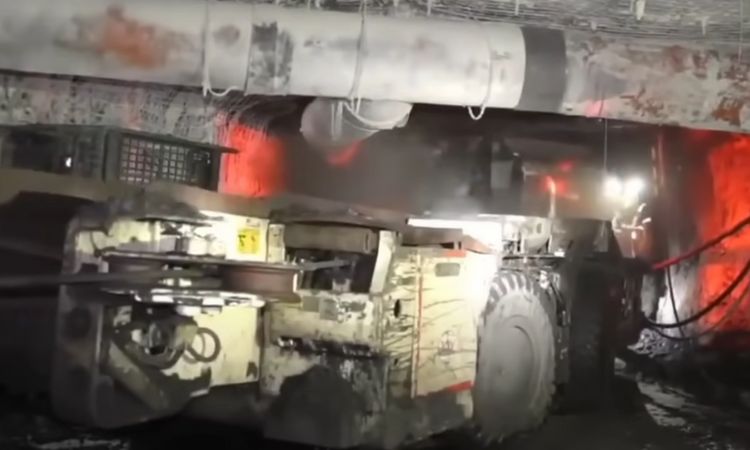Subsurface mining, also known as underground mining, is a method of extracting minerals and resources from beneath the Earth’s surface. This form of mining is commonly used when mineral deposits are located deep underground, making it more feasible to access them through tunnels, shafts, or other subterranean routes rather than through traditional open-pit methods. Subsurface mining is essential for accessing valuable materials such as coal, gold, diamonds, and other important resources that cannot be retrieved through surface mining.
While subsurface mining offers several advantages, particularly in terms of resource extraction, it is also accompanied by a number of environmental, safety, and operational challenges. In this article, we will explore the 9 key pros and 9 cons of subsurface mining, providing a comprehensive look at how this mining technique impacts both industries and communities. By the end of the article, readers will gain a well-rounded understanding of both the benefits and the challenges associated with subsurface mining.
Pros of Subsurface Mining
1. Access to Deeper Mineral Deposits
One of the major advantages of subsurface mining is that it allows for the extraction of minerals that are located deep beneath the Earth’s surface. Some of the world’s most valuable resources, such as gold, silver, and diamonds, are found at depths that would be impossible to reach with surface mining methods. Subsurface mining enables miners to access these mineral deposits without disturbing large areas of land on the surface, making it a highly efficient method for extracting these precious materials.

2. Minimal Surface Disruption
Unlike open-pit or strip mining, subsurface mining causes minimal disruption to the surface landscape. This is particularly beneficial in areas where preserving the environment is a priority. Since the majority of the mining operations take place underground, subsurface mining does not result in large-scale deforestation, soil erosion, or destruction of local ecosystems. This makes it a more sustainable option for accessing minerals when compared to surface mining methods, which can leave lasting scars on the environment.
3. Less Environmental Impact on Surface Ecosystems
Subsurface mining generally has a lower environmental impact on surface ecosystems than other forms of mining. By reducing the need to remove large quantities of soil and rock from the surface, subsurface mining can help maintain natural habitats for plants and animals. This is especially important in ecologically sensitive areas, where preserving biodiversity is essential. The reduction in surface disturbance also means that there is less risk of contamination from mining waste being carried into nearby rivers, lakes, or groundwater systems.
4. Increased Safety for Workers
When done correctly, subsurface mining can offer better safety conditions for workers compared to open-pit mining. Because underground mining operations are often carried out within tunnels or shafts, workers are generally not exposed to the harsh environmental elements such as extreme weather, dust, or intense heat that can be present on the surface. Additionally, subsurface mining can reduce the risk of large-scale accidents, such as landslides or rock falls, which can occur in open-pit mining operations.
5. Preservation of Topsoil
Topsoil, which is crucial for maintaining healthy ecosystems and agricultural production, is less likely to be disturbed by subsurface mining. In surface mining, large amounts of topsoil are often removed, leading to long-term soil degradation and loss of fertile land. However, with subsurface mining, the majority of the soil remains undisturbed, preserving it for future use. This is particularly important in areas where agriculture is a major industry, as it ensures that land can still be used for farming once the mining operation has concluded.
6. Reduced Surface Water Pollution
Subsurface mining, if managed properly, can have less of an impact on surface water sources compared to surface mining. Open-pit and strip mining often lead to the contamination of nearby rivers, lakes, and streams due to runoff from mining activities. The disturbed earth and tailings from mining operations can carry harmful chemicals into water systems. However, subsurface mining typically results in less surface water runoff, as the mining activity is concentrated underground. This makes it easier to manage and mitigate water pollution caused by mining.

7. Higher Resource Recovery Rates
Subsurface mining generally allows for higher recovery rates of valuable minerals. By accessing ore deposits deep underground, miners can extract more minerals from the same site compared to surface mining, where access to deeper layers may be limited. The precision with which miners can access specific mineral deposits ensures that less material is wasted during extraction, leading to more efficient use of natural resources.
8. Ability to Mine in Urban or Sensitive Areas
In some cases, subsurface mining can be carried out in areas where surface mining would be too disruptive, such as densely populated urban areas or protected natural spaces. By operating underground, mining companies can access valuable resources without causing significant disruption to surface-level infrastructure or the environment. This makes subsurface mining an appealing option for urban mining or in regions where preserving the surface environment is a priority.
9. Reduced Carbon Footprint
Subsurface mining can have a lower carbon footprint compared to surface mining. Since subsurface mining reduces the need for large-scale equipment and transportation, the energy consumption associated with the operation can be lower. Additionally, by avoiding surface disturbances, subsurface mining can reduce emissions related to dust and erosion, which are common side effects of surface mining operations. This makes subsurface mining a potentially more eco-friendly alternative, particularly in regions where environmental concerns are paramount.
Cons of Subsurface Mining
1. High Initial Costs
Subsurface mining often requires a significant upfront investment in infrastructure. The process of constructing tunnels, shafts, and underground chambers is capital-intensive, requiring specialized equipment and skilled labor. The high costs associated with setting up and maintaining these underground operations can make subsurface mining an expensive option, especially for smaller mining operations or those with limited resources. These initial costs can take years to recoup, and in some cases, may make the operation financially unfeasible without access to a rich and continuous mineral deposit.
2. Worker Safety Risks
While subsurface mining may provide some safety benefits over surface mining, it also presents significant risks to workers. Underground mining operations can expose workers to dangerous conditions such as cave-ins, toxic gas leaks, and rock falls. Additionally, the confined space of underground mines can make it difficult to respond quickly to emergencies. While modern technology and safety protocols have improved worker protection, subsurface mining remains a hazardous profession, and the risk of accidents or fatalities is always a concern.
3. Limited Access to Resources
Unlike open-pit mining, where large quantities of material can be extracted at once, subsurface mining is often limited to extracting minerals from specific veins or pockets of ore. This means that only certain resources are accessible through underground mining, and the process may not be as efficient in terms of volume extraction. As a result, subsurface mining can lead to the incomplete recovery of minerals, and in some cases, miners may leave behind valuable deposits that are too difficult to reach using existing methods.
4. Environmental Impact of Underground Water
Although subsurface mining generally causes less surface disturbance, it can have significant impacts on underground water sources. Mining tunnels can disrupt natural groundwater flow, potentially leading to the contamination of aquifers and underground water reserves. Additionally, the extraction process can cause subsidence, where the ground above the mined area sinks or shifts, which may affect nearby wells or underground water systems. Without proper management, subsurface mining can result in long-term water contamination and depletion, which can affect local communities and ecosystems.
5. Subsidence and Ground Deformation
One of the most significant environmental concerns associated with subsurface mining is ground subsidence. As miners extract materials from beneath the Earth’s surface, the overlying soil and rock may collapse or sink, leading to the deformation of the surface above the mine. This can result in cracks in the ground, damage to infrastructure, and loss of agricultural land. In some cases, subsidence can be severe enough to cause building foundations to shift or collapse, posing safety risks for communities living near mining areas.
6. Complex and Costly Waste Disposal
Mining operations, whether subsurface or surface, generate waste in the form of tailings, overburden, and other byproducts. Subsurface mining operations are no exception, and managing this waste can be a complex and costly process. Waste materials from underground mines must often be carefully stored and disposed of to prevent contamination of water sources or the surrounding environment. Additionally, the waste disposal process can be difficult to manage due to the limited space available underground, making it challenging to find appropriate areas for storing or processing waste materials.
7. Limited Life Span of Mining Operations
Subsurface mining operations typically have a shorter lifespan compared to surface mining. Once all the accessible minerals are extracted, the mine must be closed and the area restored. This can lead to the premature cessation of mining activities, particularly in cases where the mineral deposit is small or the extraction process is slow. The limited lifespan of subsurface mining operations can make it difficult to justify the large initial investment, as companies may not be able to recover their costs before the mine is depleted.
8. Technological Limitations
Subsurface mining is often limited by the technology available for accessing and extracting minerals. While advancements in tunneling and drilling technology have made it possible to mine deeper and more efficiently, there are still significant limitations to the depth and complexity of mining operations. As mineral deposits are located deeper beneath the surface, mining companies may struggle to access these resources economically, and the risks associated with deeper mining operations can increase exponentially. This means that some rich mineral deposits may remain untapped due to technological constraints.
9. Disruption of Local Communities
While subsurface mining generally causes less surface disruption, it can still have a significant impact on local communities. The construction and operation of underground mines can lead to the displacement of people, disruption of local economies, and changes to land use. In some cases, subsurface mining can affect the quality of life for residents living near mining operations, especially if subsidence or contamination of water sources occurs. Additionally, the noise, dust, and other pollutants generated by mining operations can reduce the quality of life for nearby communities, even if the surface landscape remains relatively undisturbed.
Conclusion
Subsurface mining is a complex and multifaceted technique that offers both significant advantages and substantial challenges. It provides access to deep mineral deposits, minimizes surface disruption, and offers higher resource recovery rates. However, it also comes with high upfront costs, worker safety risks, and environmental concerns such as groundwater contamination and subsidence. For mining companies, the decision to pursue subsurface mining involves balancing the benefits of resource extraction with the potential environmental, safety, and financial costs.
Understanding the pros and cons of subsurface mining is essential for making informed decisions about whether this technique is appropriate for a given mineral deposit or location. By managing risks effectively, investing in modern technologies, and adhering to strict safety and environmental regulations, it is possible to mitigate some of the drawbacks of subsurface mining, ultimately making it a viable and sustainable option for extracting valuable minerals.
